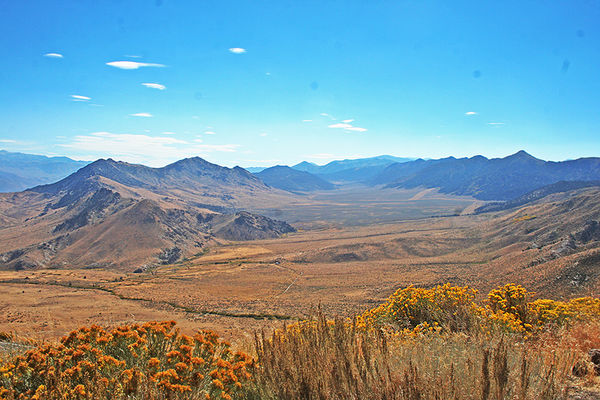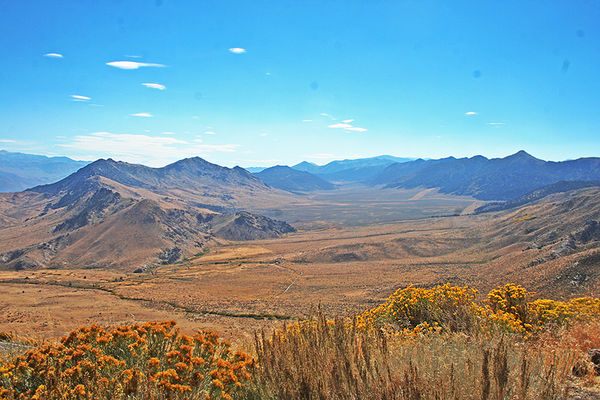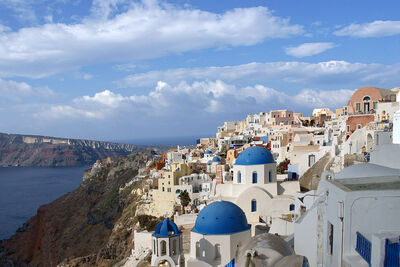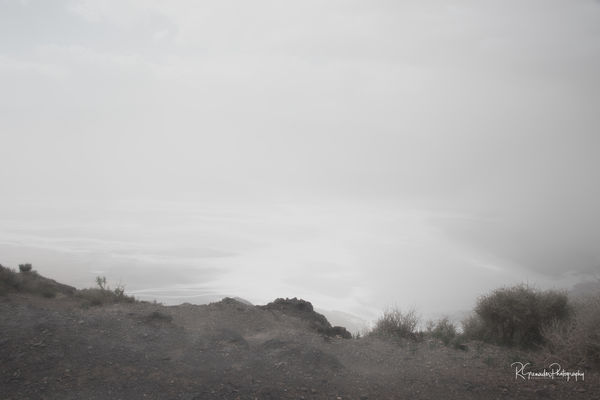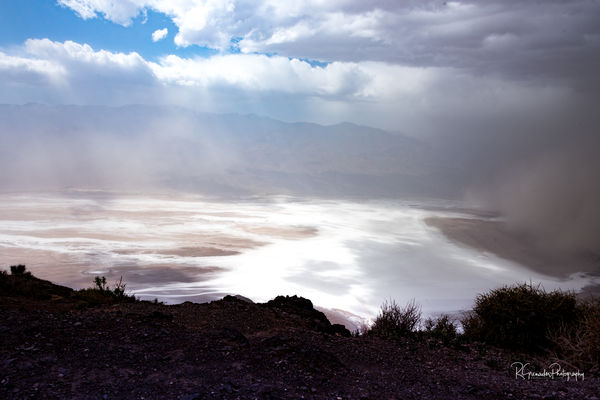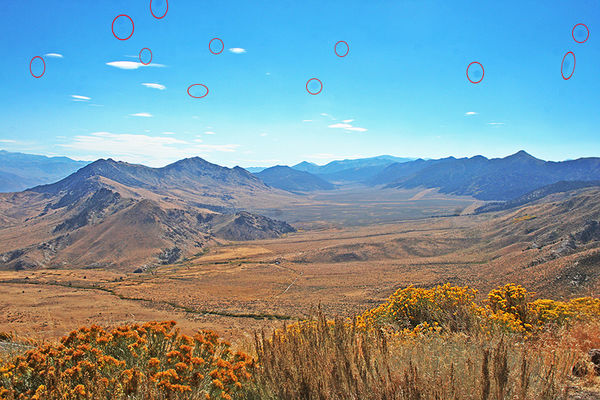Removing "Haze" from landscapes
This topic is locked to prevent further replies.
May 22, 2018 18:22:08 #
WOW! This has been a problem and a question of mine for 15 yr - I could get some of it out but nothing like I can now that I watched this youtube
tuthttps://www.youtube.com/watch?v=2Z3t3KR8ZvM&t=432sorial.
Attached are my before and after images.
Harvey in the Sierras
tuthttps://www.youtube.com/watch?v=2Z3t3KR8ZvM&t=432sorial.
Attached are my before and after images.
Harvey in the Sierras
May 22, 2018 18:25:31 #
You might want to double-check if the 'after' image is the correct version? You might too want to clone-out the sensor dust while processing haze.
May 22, 2018 18:57:32 #
To a certain extent I agree with what a professional said at a seminar last year ....., "Haze is normal. It's a condition of nature. Why does everyone try to get rid of it?". I usually try 2 things on haze if it's really bad: 1. Most haze is slightly bluish. Reducing the blue saturation will sometimes make a big difference. 2. Darkening the shadows in the haze area gives the illusion that the haze is not as strong. My 2 cents.
May 22, 2018 19:23:46 #
SonyA580 wrote:
To a certain extent I agree with what a professional said at a seminar last year ....., "Haze is normal. It's a condition of nature. Why does everyone try to get rid of it?". I usually try 2 things on haze if it's really bad: 1. Most haze is slightly bluish. Reducing the blue saturation will sometimes make a big difference. 2. Darkening the shadows in the haze area gives the illusion that the haze is not as strong. My 2 cents.
Because you can bring out hidden details and beauty in your image without it being another washed out landscape shot. The two images attached illustrate the incredible power of the DeHaze filter.
Image 1 was shot at Dante's Peak Death Valley as a major storm moved in. Clouds and dust dropped visibility to zilch; wind was gusting to 40 mph and the temperatures were in the 30s. In the second image, the only difference is with the DeHaze slider moved to +67. Which is extreme, but it rescued the photograph, and since the wind closed the road, was the last chance that trip I could get to Dante's. The next step would have been a graduated filter on the bottom of the image to open up shadows, but for discussions sake, the only tool I applied was DeHaze.
This is why I try to get rid of atmospheric haze in landscapes. Made lemonade out of lemons.
May 22, 2018 21:41:46 #
You are right about the B&A photos being off - I hurried thru the posting - as for "sensor dust" that is new to me and I would like you to point it out to me so I'll know what to look for in the future
Harvey
Harvey
CHG_CANON wrote:
You might want to double-check if the 'after' image is the correct version? You might too want to clone-out the sensor dust while processing haze.
May 22, 2018 21:51:05 #
Thanks for your 2 cents- LOL - yah - I know that haze is natural but at times it is not what I want in my capture - I sometimes don't get to be in a location that I want to shoot in the best of conditions so when I do get to shoot a favorite landscape I want the results to be as close to the perfection that is in my memory - therefore lots of PP at times.
mountain haze and coastal haze/fog are my most dreaded.
Harvey
mountain haze and coastal haze/fog are my most dreaded.
Harvey
SonyA580 wrote:
To a certain extent I agree with what a professional said at a seminar last year ....., "Haze is normal. It's a condition of nature. Why does everyone try to get rid of it?". I usually try 2 things on haze if it's really bad: 1. Most haze is slightly bluish. Reducing the blue saturation will sometimes make a big difference. 2. Darkening the shadows in the haze area gives the illusion that the haze is not as strong. My 2 cents.
May 22, 2018 22:00:26 #
Harvey wrote:
You are right about the B&A photos being off - I hurried thru the posting - as for "sensor dust" that is new to me and I would like you to point it out to me so I'll know what to look for in the future
Harvey
Harvey
Harvey, I circled the worst spots, but you should look at the image at 100% and address all the various circle-shaped spots. You can continue to clean-up images after the capture. But, you actually should clean the sensor, both with manual execution of the sensor clean by the camera and blowing with a Giottos Rocket-Air.
May 22, 2018 22:02:43 #
Thanks for your post and examples of making "lemonade" - your example is what I learned years ago while sitting and listening to the judge's comments on competition night - mostly I listened to this statement over and over by the various judges. "If you had your own dark room you could do ----- this or that" When I attended my first demonstration of Photoshop I knew it was going to be my "dark room" and it has been for the past 15 yrs - Oh I am far from an expert with it - the same as my photography - but it keeps me sober.
Harvey
Harvey
rgrenaderphoto wrote:
Because you can bring out hidden details and beaut... (show quote)
May 22, 2018 22:07:56 #
Thanks for your help- I'll look into that. As for cleaning the sensor I have never done any thing but use the camera's cleaning program - gotta get my nerve up to do that "puff of air" cleaning.
Harvey
After posting this reply I went to Google and researched the cleaning process for my Canon T3i - then went to Amazon and ordered this cleaning kit - thanks for you help'
https://www.amazon.com/dp/B06Y65NXKR/ref=sspa_dk_detail_4?psc=1&pd_rd_i=B06Y65NXKR&pd_rd_wg=jkG4E&pd_rd_r=ATH8EY3BQDWZ660XJADS&pd_rd_w=aAucc
Harvey
After posting this reply I went to Google and researched the cleaning process for my Canon T3i - then went to Amazon and ordered this cleaning kit - thanks for you help'
https://www.amazon.com/dp/B06Y65NXKR/ref=sspa_dk_detail_4?psc=1&pd_rd_i=B06Y65NXKR&pd_rd_wg=jkG4E&pd_rd_r=ATH8EY3BQDWZ660XJADS&pd_rd_w=aAucc
CHG_CANON wrote:
Harvey, I circled the worst spots, but you should look at the image at 100% and address all the various circle-shaped spots. You can continue to clean-up images after the capture. But, you actually should clean the sensor, both with manual execution of the sensor clean by the camera and blowing with a Giottos Rocket-Air.
May 23, 2018 07:16:57 #
If you are using Lightroom go to the Spot Removal tool and click the Visualize Spots box at bottom of screen.
May 23, 2018 08:49:45 #
Jrhoffman75 wrote:
If you are using Lightroom go to the Spot Removal tool and click the Visualize Spots box at bottom of screen.
He's using Photoshop. In the tools block on the left, select the ''Patch" tool. In the bar at the top make sure to select "Destination". With your mouse, circle a small patch of sky and then move it over the dust spot. Not as good as actually cleaning the sensor but it works in a pinch.
May 23, 2018 09:02:46 #
The video is using an older version of LR that shows the dehaze filter in the "Effects" module. The latest version has moved the filter to the "Basic" module under Presence. Dehaze still works the same but it's easier to navigate to now.
May 23, 2018 09:10:20 #
If its the current version of PS then the Visualize Spots tool in the ACR Spot Removal tool.
May 23, 2018 09:54:40 #
Harvey wrote:
WOW! This has been a problem and a question of mine for 15 yr - I could get some of it out but nothing like I can now that I watched this youtube
tuthttps://www.youtube.com/watch?v=2Z3t3KR8ZvM&t=432sorial.
Attached are my before and after images.
Harvey in the Sierras
tuthttps://www.youtube.com/watch?v=2Z3t3KR8ZvM&t=432sorial.
Attached are my before and after images.
Harvey in the Sierras
Sorry Harvey but I don't see any difference at all between the two that you posted. I use dehaze in the enhancement tab in PSE and it works very good....Rich
May 23, 2018 10:46:02 #
rgrenaderphoto wrote:
Because you can bring out hidden details and beaut... (show quote)
That is simply AMAZING!!
If you want to reply, then register here. Registration is free and your account is created instantly, so you can post right away.

